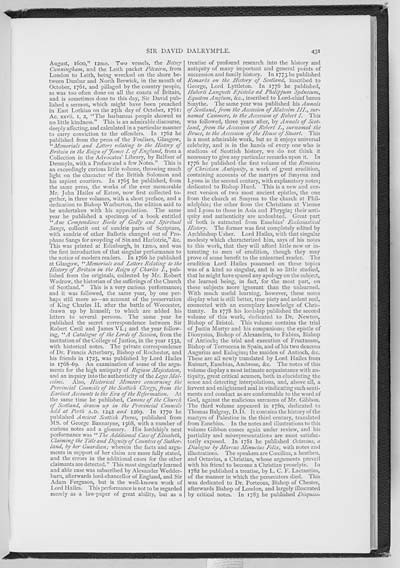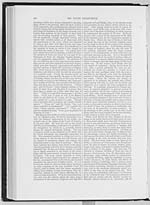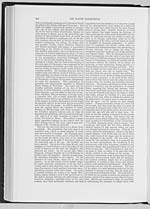431
August, 1600," 12mo. Two vessels, the Betsey
Cunningham, and the Leith packet Pitcairn, from
London to Leith, being wrecked on the shore be-
tween Dunbar and North Berwick, in the month of
October, 1761, and pillaged by the country people,
as was too often done on all the coasts of Britain,
and is sometimes done to this day, Sir David pub-
lished a sermon, which might have been preached
in East Lothian on the 25th day of October, 1761:
Ac. xxvii. I, 2, "The barbarous people showed us
no little kindness." This is an admirable discourse,
deeply affecting, and calculated in a particular manner
to carry conviction to the offenders. In 1762 he
published from the press of the Foulises, Glasgow,
"Memorials and Letters relating to the History of
Britain in the Reign of James I. of England, from a
Collection in the Advocates' Library, by Balfour of
Denmyln, with a Preface and a few Notes." This is
an exceedingly curious little volume, throwing much
light on the character of the British Solomon and
his sapient courtiers. In 1765 he published, from
the same press, the works of the ever memorable
Mr. John Hailes of Eaton, now first collected to-
gether, in three volumes, with a short preface, and a
dedication to Bishop Warburton, the edition said to
be undertaken with his approbation. The same
year he published a specimen of a book entitled
"Ane Compendious Booke of Godly and Spiritual
Sangs, collectit out of sundrie parts of Scripture,
with sundrie of other Ballotis changed out of Pro-
phane Sangs for avoyding of Sin and Harlotrie," &c.
This was printed at Edinburgh, in 12mo, and was
the first introduction of that singular performance to
the notice of modern readers. In 1766 he published
at Glasgow, "Memorials and Letters Relating to the
History of Britain in the Reign of Charles I., pub-
lished from the originals, collected by Mr. Robert
Wodrow, the historian of the sufferings of the Church
of Scotland." This is a very curious performance;
and it was followed, the same year, by one per-
haps still more so�an account of the preservation
of King Charles II. after the battle of Worcester,
drawn up by himself; to which are added his
letters to several persons. The same year he
published the secret correspondence between Sir
Robert Cecil and James VI.; and the year follow-
ing, "A Catalogue of the Lords of Session, from the
institution of the College of Justice, in the year 1532,
with historical notes. The private correspondence
of Dr. Francis Atterbury, Bishop of Rochester, and
his friends in 1725, was published by Lord Hailes
in 1768-69. An examination of some of the argu-
ments for the high antiquity of Regiam Majestatem,
and an inquiry into the authenticity of the Leges Mal-
colmi. Also, Historical Memoirs concerning the
Provincial Councils of the Scottish Clergy, from the
Earliest Accounts to the Era of the Reformation. At
the same time he published, Canons of the Church
of Scotland, drawn up in the Provincial Councils
held at Perth A.D. 1242 and 1269. In 1770 he
published Ancient Scottish Poems, published from
MS. of George Bannatyne, 1568, with a number of
curious notes and a glossary. His lordship's next
performance was " The Additional Case of Elizabeth,
Claiming the Title and Dignity of Countess of Suther-
land, by her Guardian; wherein the facts and argu-
ments in support of her claim are more fully stated,
and the errors in the additional cases for the other
claimants are detected." This most singularly learned
and able case was subscribed by Alexander Wedder-
burn, afterwards lord-chancellor of England, and Sir
Adam Ferguson, but is the well-known work of
Lord Hailes. This performance is not to be regarded
merely as a law-paper of great ability, but as a
treatise of profound research into the history and
antiquity of many important and general points of
succession and family history. In 1773 he published
Remarks on the History of Scotland, inscribed to
George, Lord Lyttleton. In 1776 he published,
Huberti Langueti Epistola ad Philippum Sydneium,
Equitem Anglum, &c., inscribed to Lord-chief baron
Smythe. The same year was published his Annals
of Scotland, from the Accession of Malcolm III., sur-
named Canmore, to the Accession of Robert I. This
was followed, three years after, by Annals of Scot-
land, from the Accession of Robert 1., surnamed the
Bruce, to the Accession of the House of Stuart. This
is a most admirable work, but as it enjoys universal
celebrity, and is in the hands of every one who is
studious of Scottish history, we do not think it
necessary to give any particular remarks upon it. In
1776 he published the first volume of the Remains
of Christian Antiquity, a work of great erudition,
containing accounts of the martyrs of Smyrna and
Lyons in the second century, with explanatory notes;
dedicated to Bishop Hurd. This is a new and cor-
rect version of two most ancient epistles, the one
from the church at Smyrna to the church at Phil-
adelphia; the other from the Christians at Vienne
and Lyons to those in Asia and Phrygia; their anti-
quity and authenticity are undoubted. Great part
of both is extracted from Eusebius' Ecclesiastical
History. The former was first completely edited by
Archbishop Usher. Lord Hailes, with that singular
modesty which characterized him, says of his notes
to this work, that they will afford little new or in-
teresting to men of erudition, though they may
prove of some benefit to the unlearned reader. The
erudition Lord Hailes possessed on these topics
was of a kind so singular, and is so little studied,
that he might have spared any apology on the subject,
the learned being, in fact, for the most part, on
these subjects more ignorant than the unlearned.
With much useful learning, however, these notes
display what is still better, true piety and ardent zeal,
connected with an exemplary knowledge of Chris-
tianity. In 1778 his lordship published the second
volume of this work, dedicated to Dr. Newton,
Bishop of Bristol. This volume contains the trial
of Justin Martyr and his companions; the epistle of
Dionysius, Bishop of Alexandria, to Fabius, Bishop
of Antioch; the trial and execution of Fructuosus,
Bishop of Torrocena in Spain, and of his two deacons
Augurius and Eulogius; the maiden of Antioch, &c.
These are all newly translated by Lord Hailes from
Ruinart, Eusebius, Ambrose, &c. The notes of this
volume display a most intimate acquaintance with an-
tiquity, great critical acumen, both in elucidating the
sense and detecting interpolations, and, above all, a
fervent and enlightened zeal in vindicating such senti-
ments and conduct as are conformable to the word of
God, against the malicious sarcasms of Mr. Gibbon.
The third volume appeared in 1780, dedicated to
Thomas Balgray, D. D. It contains the history of the
martyrs of Palestine in the third century, translated
from Eusebius. In the notes and illustrations to this
volume Gibbon comes again under review, and his
partiality and misrepresentations are most satisfac-
torily exposed. In 1781 he published Octavius, a
Dialogue by Marcus Minucius Felix, with notes and
illustrations. The speakers are C�cilius, a heathen,
and Octavius, a Christian, whose arguments prevail
with his friend to become a Christian proselyte. In
1782 he published a treatise, by L. C. F. Lactantius,
of the manner in which the persecutors died. This
was dedicated to Dr. Porteous, Bishop of Chester,
afterwards Bishop of London, and largely illustrated
by critical notes. In 1783 he published Disquisi-

![]() Universal Viewer |
Universal Viewer | ![]() Mirador |
Large image | Transcription
Mirador |
Large image | Transcription
![]()

